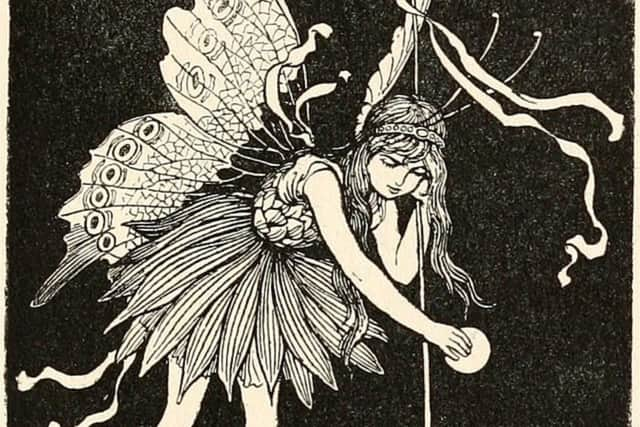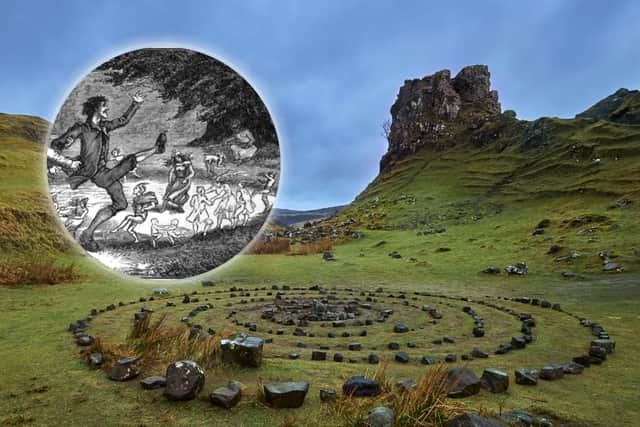Isle of Skye Fairy Pools Guide: Why are the fairy pools so named? Scots folklore explained
Eclipsed by the Black Cuillin mountain peaks on the Isle of Skye, the fairy pools are one of Scotland’s most breathtaking destinations which - as their name suggests - are rich in folklore.


The Isle of Skye is one of Scotland’s most beloved attractions and for good reason; it’s like something out of a fairytale. Decorated with gorgeous munros, waterfalls and castles, one feels like they have left one world behind and entered another. That said, in the case of the isle’s fairy pools, this may hold some truth to it.
These shimmering crystal clear pools of teal and aquamarine hues nestled in the heart of Glen Brittle (one of Skye’s must-visit locations) attract thousands of visitors every year including swimmers to brave their icy waters. Similarly, the fairies - abundant mythological creatures in Scottish folklore - are said to flutter nearby and bathe in the pools.
Advertisement
Hide AdAdvertisement
Hide AdYou may know them in the Scots language as “wee folk” (little people) as they were referred to in Outlander, but fewer are aware of Scotland’s two ‘factions’ of fairies and how one is benevolent and another malevolent; known to murder wanderers and abduct unsuspecting youths.
To discover more about Scotland’s magnificent fairy pools and the intriguing heritage and lore that envelops them, here is an overview of this destination and what you should know about it.


What are the fairy pools?
According to Dunvegan Castle: “The Fairy Pools are beautiful rock pools of translucent mountain spring water fed by a series of waterfalls.” They are situated on Allt Coir’ a’ ‘Mhadaidh which in our native Celtic tongue, Scottish Gaelic, may be translated as “burn of the wolf”.
Note: did you know that “wolf” in Gaelic can be expressed as “mac-tìre” which means “son of the land” - demonstrating ancient Scots’ deep-rooted connection to nature.
Like most lochs in Scotland, the pools are popular with walkers and outdoor enthusiasts who are drawn in appreciation of them and the gorgeous scenery that surrounds them i.e., the majestic Cuillin mountain range.
Where are they? You can reach the Isle of Skye’s Fairy Pools one and a half miles from the nearby Fairy Pools car park close to Glenbrittle.


Why are the fairy pools so named?
Fairy myths are common all over Scotland but especially prevalent in Skye where one in particular, the Fairy Flag legend of Dunvegan Castle, is associated with the Fairy Pools. As the tale is told, the chieftain of Clan Macleod of Dunvegan was to marry a “bean sidhe” (fairy woman) who was princess of the Shining Folk i.e., fairies.
Despite being in love with one another, the King of the Fairies forbade their marriage which led to his daughter’s upset. In response, he permitted their union but only for one year as a trial. The pair had a son together but, once their year was up, the Fairy Princess was commanded to return to her original realm.
Advertisement
Hide AdAdvertisement
Hide AdDistraught, one night she heard her baby in the human world weeping so she instantly returned to him, wrapped him in a silk shawl, and lulled him to sleep through song. This is why the tale is named the “Fairy Flag”.
There are multiple versions of this legend and it accounts for why - if you look at a Scottish map of the Isle of Skye (especially near Dunvegan) - you find many fairy place names scattered throughout. The Nomads Travel Guide reports that selkies, another creature from Scottish mythology, also visit the pools.
Selkies are seals that can transform into humans by shedding their aquatic skins. On the isle, it is said they would go to the beach at the foot of Glen Brittle and from there make a pilgrimage to the fairy pools where they would bathe under the light of the full moon.


History of Skye’s Fairy Pools
As a land of clans and castles and bloody battles, it should come as no surprise that the Fairy Pools were once the site of a vicious feud - the battle of Coire na Creiche (“Corrie of the Spoils”) in 1601. It fell between the Macdonalds of Sleat and the Macleods of Dunvegan who had ‘bad blood’ after a long history of fighting each other.
In a bid to bring peace, the Macleod Laird (lord) offered his sister’s hand in marriage to the Macdonald laird. The pair were handfasted and remained together for a year as a trial. However, by the year’s end the sister had not produced a child for him and became blind in one eye, rendering her ‘useless’ to the Macdonalds.
She was returned to her brother tied to a horse led by a servant with a dog; all of which only had one eye. In response to the belligerence, the Macleod laird called for the battle of Coire na Creiche which is often referred to as the ‘Wars of the One-Eyed Woman’.
The Macdonalds won, but many men were killed, and it is said that the Fairy Pools of Skye ran red with their blood on that dreadful day. In fact, the savagery was so shocking that both sides were forced to call a truce after reports reached the Scottish crown.
As the Isle of Skye website confirms, it was “the last Scottish clan battle ever to be fought on the Island.”


The “Wee folk” or “Sidh” - Scottish fairies explained
Advertisement
Hide AdAdvertisement
Hide AdKnown as “sìth” in Gaelic or “Wee” or “Guid folk” (small or good) in Scots, many ancient traditions of Scotland like Halloween or Lammas Day are rooted in practices intended to ward off evil spirits e.g., fairies.
As told in our folklore, these entities manifest in many forms and have varied temperaments; exhibiting friendliness or ferocity depending on their nature. Broadly, “good” fairies belong to the Seelie Court while “bad” ones form the Unseelie Court.
According to the Dictionaries of the Scots Language, the term “seelie” refers to good fortune. Fairies of the Unseelie Court are said to be attracted to mankind’s strength and vitality which is why they are known to kidnap beautiful youths in particular.
For this reason, many Scots were discouraged from visiting fairy mounds or other such sites as it was seen as gravely dangerous.
An old Gaelic song of the Scottish Hebrides entitled “A phiùthrag ‘s a phiuthar” or “Sister’s Lament” famously sung by Julie Fowlis (the ‘singing voice’ of Merida in Disney’s Brave) describes a young girl calling for her sister’s rescue after she is kidnapped by fairies. Sorrowful, she describes the fairy hideout as so:
“In a little hut I am
Low and narrow
Without a roof-rope
or a wisp of thatch.
The rain of the hills
Streaming into it
I am a poor woman
sad and miserable.”
Comments
Want to join the conversation? Please or to comment on this article.
